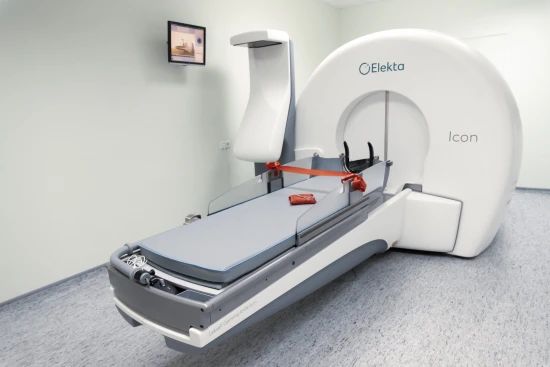Comprehensive Guide to Epilepsy: Understanding, Treating, and Thriving Despite Seizures
Overview
Epilepsy is a chronic neurological disorder characterized by recurrent, unprovoked seizures. These seizures are due to sudden, excessive electrical discharges in a group of brain cells. Different parts of the brain can be the source of these seizures, which can affect a person’s muscle control, speech, vision, or awareness. It is one of the most common neurological disorders, affecting people of all ages.
Risk Factors
Epilepsy does not have a single identifiable cause in about half the people with the condition. However, several factors may increase the risk:
- Genetic Influence: Certain types of epilepsy, which are categorized by the type of seizure you experience or the part of the brain that is affected, may be genetic.
- Head Trauma: Trauma from a car accident or other traumatic injury can cause epilepsy.
- Brain Conditions: Brain conditions that cause damage to the brain, such as brain tumors or strokes, can lead to epilepsy.
- Infectious Diseases: Infections such as meningitis, AIDS, and viral encephalitis can lead to epilepsy.
- Prenatal Injury: Before birth, babies are sensitive to brain damage that could be caused by several factors, including an infection in the mother, poor nutrition, or oxygen deficiencies.
Causes
While the exact cause of epilepsy is often unknown, the condition is generally related to abnormal brain wiring, an imbalance in neurotransmitters (brain chemicals), or a combination of these factors. Genetic abnormalities can contribute to the condition as well.
Symptoms
The main symptom of epilepsy is repeated seizures. However, the symptoms during a seizure can vary widely, depending on the type of seizure and the part of the brain involved. They can include:
- Temporary confusion
- A staring spell
- Uncontrollable jerking movements of the arms and legs
- Loss of consciousness or awareness
- Cognitive or emotional symptoms, such as fear, anxiety, or deja vu
Treatment
While there is no cure for epilepsy, treatment can help most people with epilepsy have fewer seizures, or stop having seizures completely. Treatments include:
- Medications: The first-line treatment for epilepsy is anti-seizure medications. These drugs may not work for everyone, and they come with a variety of side effects.
- Surgery: When medications fail to provide adequate control over seizures, surgery may be an option. The surgeon removes the area of your brain that's causing the seizures.
- Therapies: Vagus nerve stimulation, deep brain stimulation, and dietary therapies (like the ketogenic diet) are other treatments.
Emerging Treatments and Research
Advances in epilepsy research promise new treatments and a deeper understanding of the condition:
- Gene Therapy: Exploring genetic factors in epilepsy to develop targeted treatments.
- Advanced Neuroimaging: Enhancing diagnostic accuracy and treatment planning.
- Neuromodulation Techniques: Investigating new methods of brain stimulation to control seizures.
Technological Advancements in Epilepsy Management
Technology plays a growing role in managing epilepsy:
- Seizure Detection Devices: Wearables and smart devices that can detect seizures and alert caregivers.
- Epilepsy Apps: Mobile applications that help track seizures, medication schedules, and doctor's appointments.
- Telemedicine: Virtual consultations provide access to specialists and continuous care, especially in remote areas.
Complications
Complications of epilepsy are often related to the seizures and can include:
- Physical injuries during a seizure
- Emotional health issues, including depression and anxiety
- Developmental delays in children
- Status epilepticus (prolonged seizures), which is a life-threatening condition
- Sudden Unexpected Death in Epilepsy (SUDEP)
Prevention
In many cases, epilepsy cannot be prevented. However, some measures can reduce the risk:
- Taking care of your health during pregnancy
- Preventing head injuries
- Reducing the risk of cardiovascular diseases
- Immunizations against some infectious diseases
Living with Epilepsy: Strategies for Daily Life
Living with epilepsy involves more than managing seizures; it encompasses adapting lifestyle, environment, and mindset to ensure a safe and fulfilling life. Key strategies include:
- Education and Awareness: Understanding the condition and educating those around about epilepsy and seizure first aid is crucial.
- Seizure Triggers Management: Identifying and avoiding potential seizure triggers, such as lack of sleep, alcohol consumption, stress, or flashing lights.
- Safety Measures at Home: Implementing safety measures like having showers instead of baths, using guards on stoves, and wearing a medical alert bracelet.
The Role of Diet and Exercise
Diet and exercise play a significant role in managing epilepsy:
- Ketogenic Diet: A high-fat, low-carbohydrate diet has been effective in reducing seizure frequency in some individuals.
- Regular Exercise: Engaging in regular physical activity can improve overall health and well-being, potentially reducing seizure frequency.
Navigating the Social and Emotional Aspects of Epilepsy
Living with epilepsy involves addressing not only physical health but also social and emotional well-being. Individuals with epilepsy may face social stigma, anxiety about seizures, and concerns about how others perceive them. Effective strategies include:
- Open Communication: Sharing experiences with friends, family, and colleagues can foster understanding and reduce misconceptions about epilepsy.
- Seeking Emotional Support: Counseling and support groups can offer a safe space to express feelings and concerns related to epilepsy.
- Building Confidence: Engaging in activities that boost self-esteem and confidence can help mitigate the emotional impact of epilepsy.
Epilepsy in Children and Adolescents
Managing epilepsy in younger individuals poses unique challenges:
- Education: Working closely with schools to implement seizure action plans and ensuring teachers and staff are informed about epilepsy.
- Social Development: Supporting social interactions and activities to promote a sense of normalcy and inclusion.
Epilepsy and Pregnancy
Women with epilepsy face specific challenges during pregnancy, requiring careful management of medication and monitoring for both mother and baby.
Epilepsy in the Workplace
Navigating epilepsy in a professional setting involves:
- Understanding Rights: Being aware of legal rights and accommodations in the workplace.
- Workplace Disclosure: Deciding when and how to disclose epilepsy to employers and coworkers.
- Seeking Reasonable Accommodations: Working with employers to create a safe and supportive work environment.
Conclusion
Epilepsy is a complex condition with diverse manifestations and challenges. However, with advancements in treatment and a deeper understanding of the condition, people with epilepsy are finding more effective ways to manage their symptoms and lead full, active lives. By continuing to spread awareness and understanding about epilepsy, we can foster a more supportive environment for those affected, enhancing their quality of life and enabling them to thrive despite their condition.



























































































